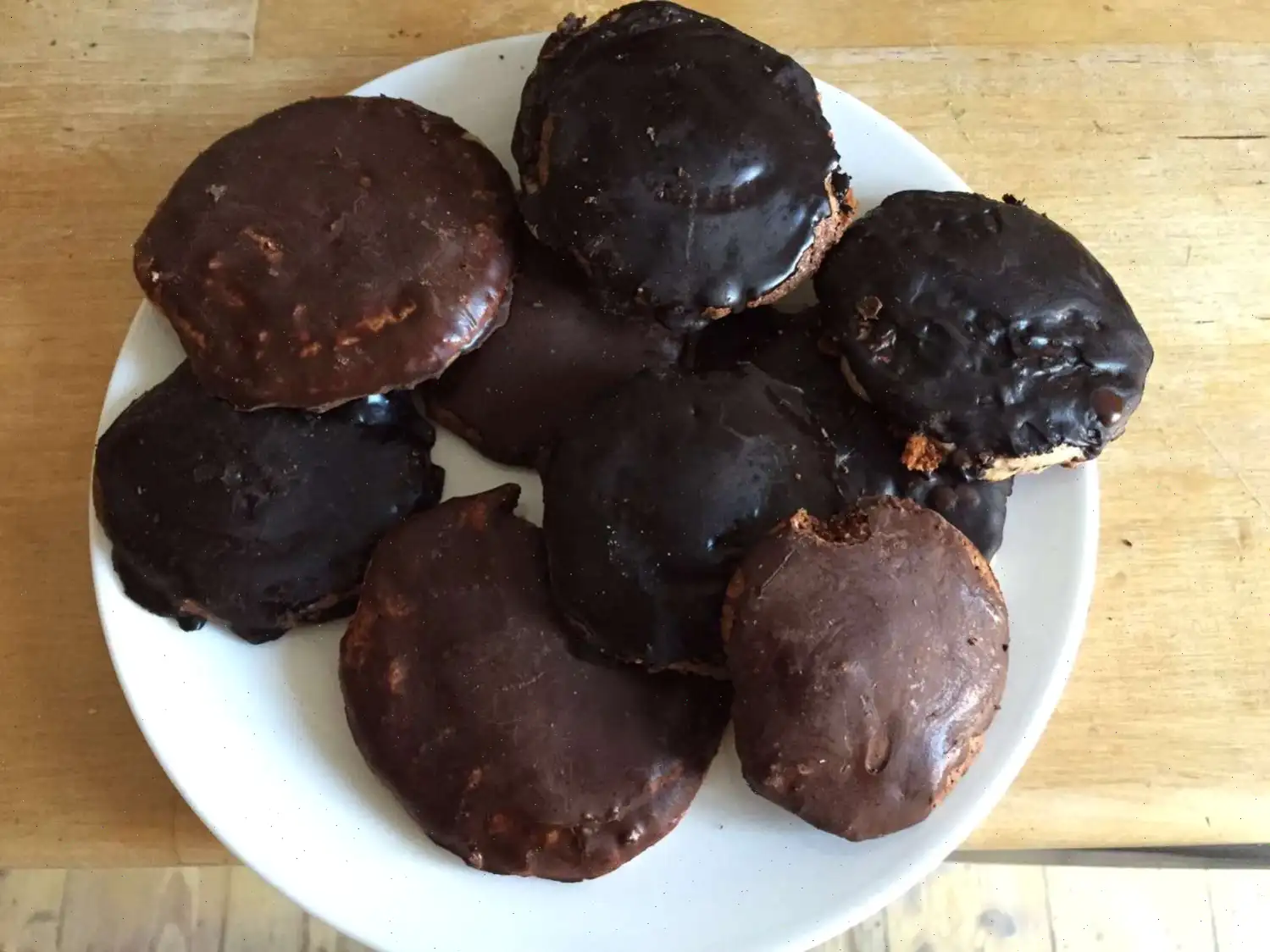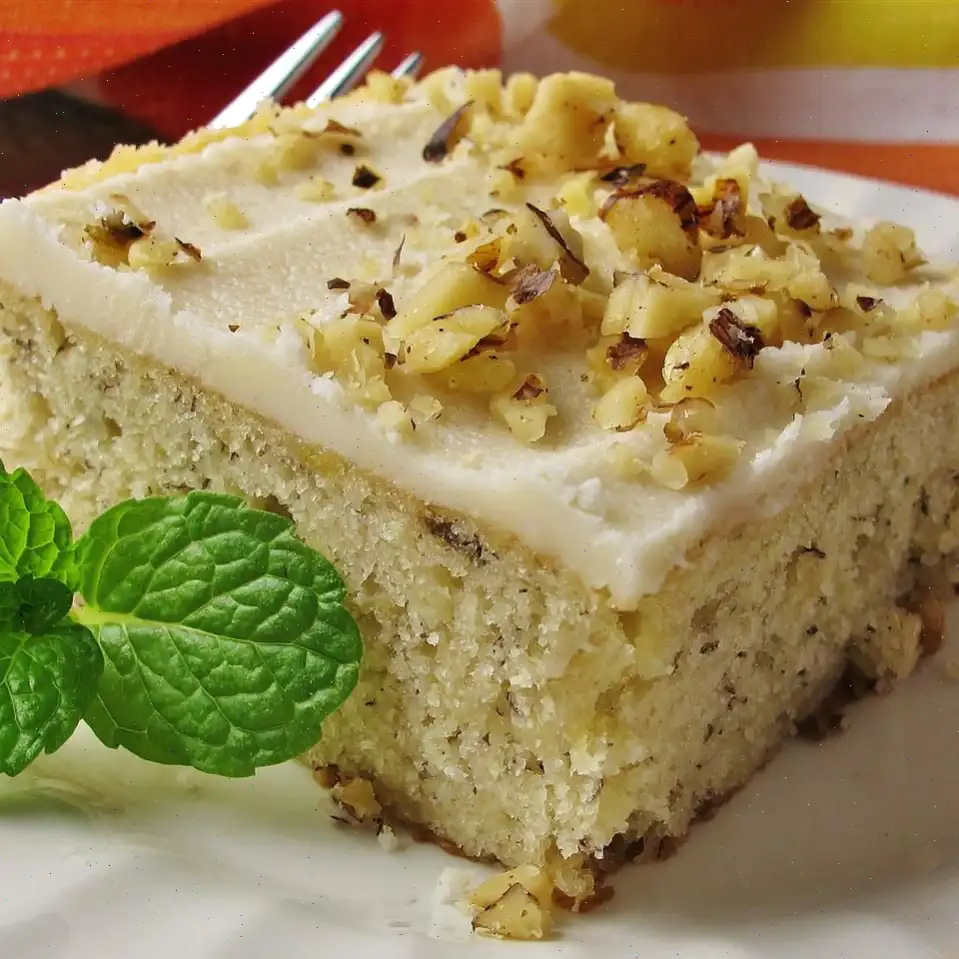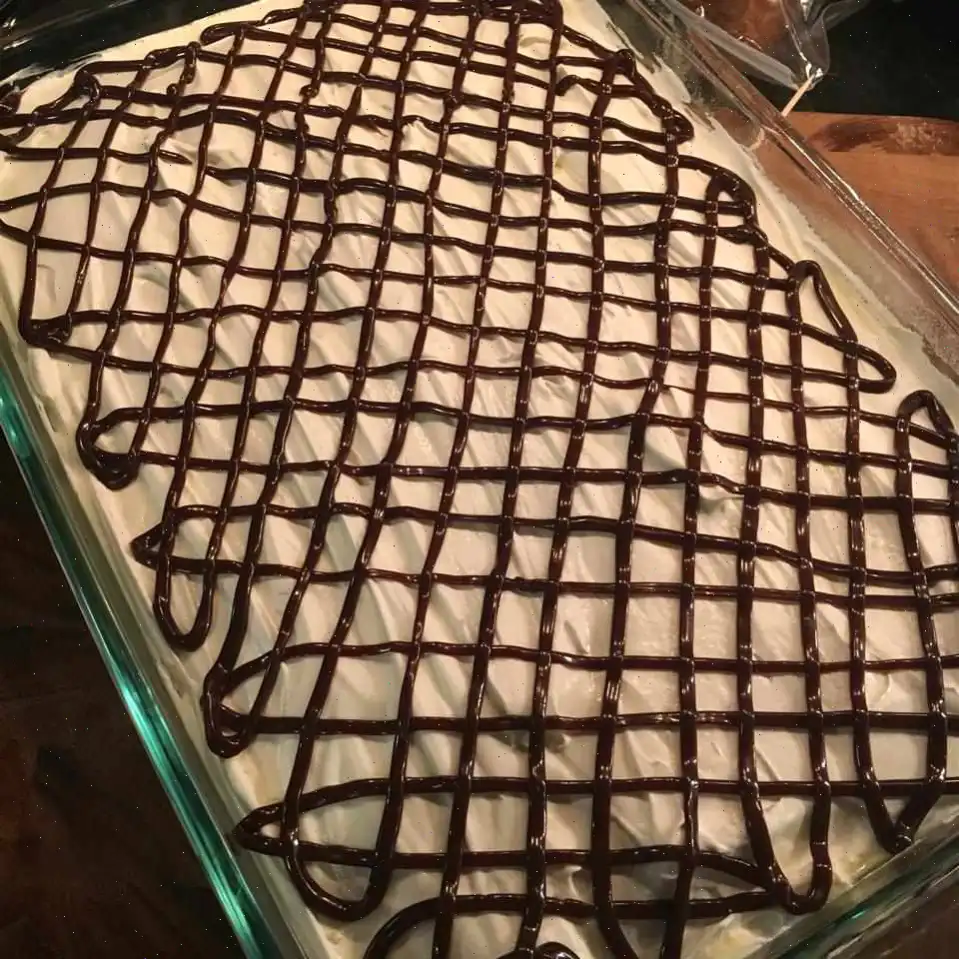
Authentic German Lebkuchen Recipe
Ingredients
This recipe was developed at its original yield. Ingredient amounts are automatically adjusted, but cooking times and steps remain unchanged. Note that not all recipes scale perfectly. Original recipe (1X) yields 25 servings.
- 25 backoblaten (German baking wafers)
- 2 cups blanched almond flour
- 1 cups white sugar
- 3 eggs
- cup ground hazelnuts
- 7 tablespoons finely chopped candied lemon and orange peel
- 2 teaspoons ground cinnamon
- 1 teaspoon vanilla sugar
- 1 pinch ground cloves
- 2 cups chopped dark chocolate
Directions
Step 1: Preheat oven to 350F (175C). Line a baking sheet with parchment paper and arrange the backoblaten (German baking wafers) on top, leaving about 1 inch of space between each.
Step 2: In a large mixing bowl, combine the almond flour, sugar, eggs, ground hazelnuts, chopped candied lemon and orange peel, ground cinnamon, vanilla sugar, and ground cloves. Mix everything together until you form a firm dough.
Step 3: Shape the dough into small balls, about the size of a walnut. Place each ball onto the prepared wafers, gently pressing down to flatten each one into a -inch-high round.
Step 4: Bake in the preheated oven for 15-20 minutes or until they turn a light golden brown. Once baked, remove from the oven and allow the cookies to cool completely on the baking sheet, about 30 minutes.
Step 5: For the chocolate coating, place the chopped dark chocolate in the top of a double boiler over simmering water. Stir frequently, scraping down the sides with a rubber spatula to prevent scorching, until the chocolate is fully melted (about 5 minutes).
Step 6: Once the cookies are cool, carefully cover the top of each one with the melted chocolate, allowing it to set as it cools.
Cook's Notes:
Traditionally, lebkuchen cookies are iced in three different ways - with milk chocolate, dark chocolate, and plain icing (confectioners' sugar mixed with lemon juice). Feel free to try all three options!
You can find backoblaten in German specialty stores or order them online.
Nutrition Facts (per serving):
- Calories: 211
- Total Fat: 12g (15% Daily Value)
- Saturated Fat: 1g (7% Daily Value)
- Cholesterol: 23mg (8% Daily Value)
- Sodium: 9mg (0% Daily Value)
- Total Carbohydrate: 25g (9% Daily Value)
- Dietary Fiber: 2g (9% Daily Value)
- Total Sugars: 17g
- Protein: 4g (8% Daily Value)
- Calcium: 9mg (1% Daily Value)
- Iron: 0mg (2% Daily Value)
- Potassium: 28mg (1% Daily Value)
Lebkuchen, often described as the German equivalent of gingerbread, is a beloved sweet treat that has been enjoyed for centuries. These fragrant, spiced cookies are traditionally made with a mix of honey, nuts, candied fruit, and various spices. Originating in Germany, lebkuchen are most commonly associated with the Christmas season, though their popularity spans the entire year in some regions.
History and Origin
The roots of Lebkuchen can be traced back to the 13th century in the city of Nuremberg, a place that is still considered the center of lebkuchen production today. The word "Lebkuchen" is derived from the German word "Lebbe," which means "life," and some believe it may have been associated with medieval medicinal cakes, as the ingredients used were thought to have health benefits. The treat evolved over the years from simple honey cakes to the more complex version we recognize today, with the addition of spices and nuts.
Regional Variations
While lebkuchen is popular throughout Germany, different regions have developed their own unique variations. In Nuremberg, for example, the "Elisenlebkuchen" is a prized version, made with a high percentage of ground nuts and little to no flour. In other areas, lebkuchen is sometimes filled with a marzipan center or covered in thick layers of chocolate. Regardless of the variation, lebkuchen is typically served as a sweet treat during the Advent season, often enjoyed with a warm cup of mulled wine or hot chocolate.
Differences from Similar Dishes
Although similar to gingerbread, lebkuchen differs in several key ways. Traditional gingerbread recipes typically contain more flour and less nut content, while lebkuchen has a denser, richer texture due to its use of ground nuts like almonds and hazelnuts. Additionally, lebkuchen often includes candied citrus peel and a blend of spices like cinnamon, cloves, and nutmeg, giving it a distinct flavor that sets it apart from gingerbread cookies.
Where Lebkuchen is Usually Served
Lebkuchen is most commonly found at German Christmas markets, where it is sold in decorative shapes, often coated with chocolate or icing. The cookies are also a popular gift during the holiday season, packaged in beautiful boxes adorned with festive decorations. Beyond Germany, lebkuchen is enjoyed throughout Europe, especially in Austria, Switzerland, and parts of Eastern Europe, where similar spiced cakes are made.
Interesting Facts
- The most famous lebkuchen, the "Nrnberger Lebkuchen," is protected by geographical indication, meaning only cookies produced in Nuremberg can bear the name.
- Lebkuchen was originally made by monks in medieval Germany. They would use the cakes as a way of raising money for monasteries.
- During the Christmas season, lebkuchen is often sold in the form of elaborate heart-shaped cookies, with messages like "Ich liebe dich" ("I love you") written on them in icing.
- Lebkuchen is sometimes used as an edible decoration on Christmas trees, where it is hung with a ribbon and enjoyed as a treat during the festive period.
FAQ about Authentic German Lebkuchen Recipe
Comments
Amy Collins
10/06/2023 01:11:19 AM
Extremely informative, thank you.








